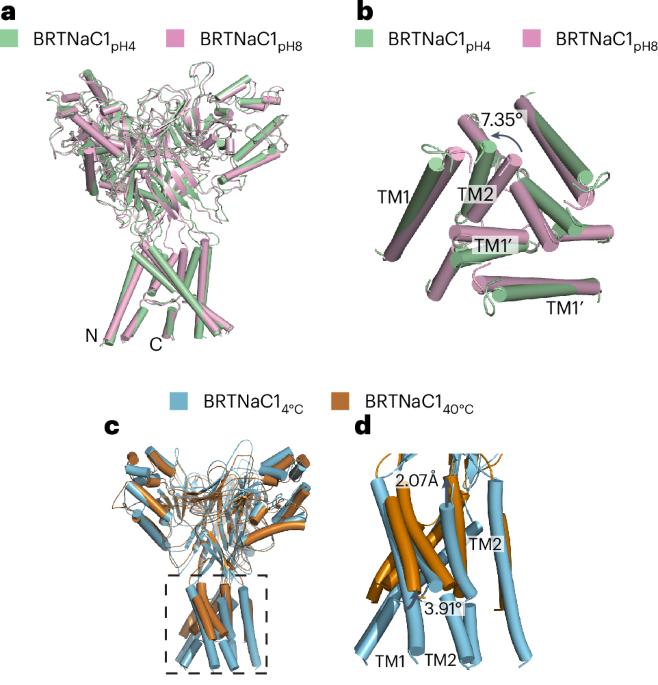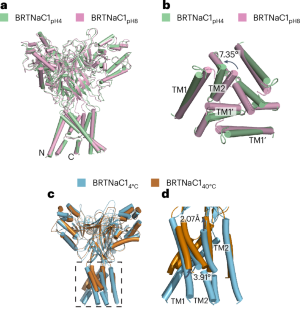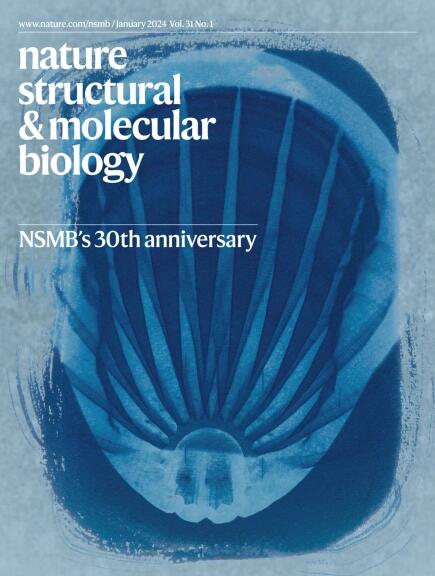蜈蚣体内热感应和质子感应离子通道的构象变化
IF 10.1
1区 生物学
Q1 BIOCHEMISTRY & MOLECULAR BIOLOGY
引用次数: 0
摘要
蜈蚣体内热和质子传感器BRTNaC1通道的结构分析、膜片钳记录和分子动力学模拟揭示了质子激活诱导的“扭手腕”机制。热诱导BRTNaC1广泛的构象变化,包括跨膜螺旋的旋转和移位以打开该通道。本文章由计算机程序翻译,如有差异,请以英文原文为准。


Conformational changes in heat- and proton-sensing ion channel in centipedes
Structural analyses, patch-clamp recordings and molecular dynamic simulations of the heat and proton sensor BRTNaC1 channel in centipedes reveal a ‘twist the wrist’ mechanism induced by proton activation. Heat induces broad conformational changes in BRTNaC1, including rotation and shift in the transmembrane helices to open this channel.
求助全文
通过发布文献求助,成功后即可免费获取论文全文。
去求助
来源期刊

Nature Structural & Molecular Biology
BIOCHEMISTRY & MOLECULAR BIOLOGY-BIOPHYSICS
CiteScore
22.00
自引率
1.80%
发文量
160
审稿时长
3-8 weeks
期刊介绍:
Nature Structural & Molecular Biology is a comprehensive platform that combines structural and molecular research. Our journal focuses on exploring the functional and mechanistic aspects of biological processes, emphasizing how molecular components collaborate to achieve a particular function. While structural data can shed light on these insights, our publication does not require them as a prerequisite.
 求助内容:
求助内容: 应助结果提醒方式:
应助结果提醒方式:


